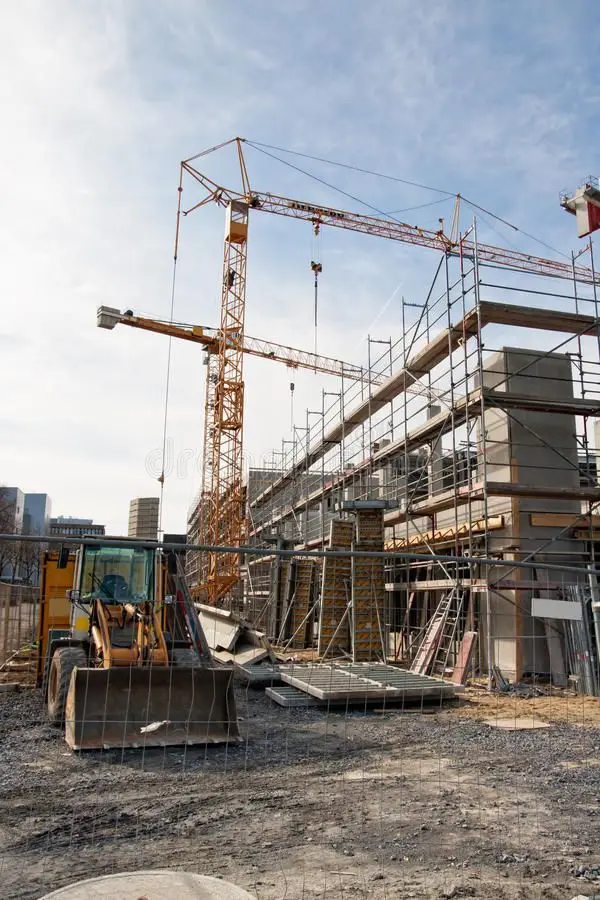Construction project mistakes cost more than just money. Small oversights quickly escalate into major issues, threatening project timelines, worker safety, and your bottom line. The ripple effects touch every aspect of your build – from foundation work to final inspections.
Fortus Construction, a trusted Sussex building construction company, follows proven methods to prevent these costly errors. Their experience shows that success depends on key elements: detailed cost estimation, robust planning processes, and strong team communication protocols.
This practical guide walks you through the most critical construction project pitfalls and their solutions. You’ll discover essential strategies for safety training implementation, resource allocation best practices, and techniques to maintain clear communication channels throughout your project lifecycle. Whether you manage small renovations or large-scale developments, these insights will help protect your project’s success.


Planning Phase Red Flags
The success of your construction project hinges on thorough planning. Fortus Construction, a respected building construction company in Sussex, helps clients identify warning signs before they become costly problems.
Missing Project Scope Details
A strong definition of scope forms the cornerstone of successful construction. Research reveals that 18% of large engineering projects exceed budgets due to poorly defined scopes. Your scope document must clearly outline activities, responsibilities, and deliverables.
Project managers frequently overlook crucial scope elements that lead to problems:
- Work verification procedures remain undefined
- Change request guidelines lack clarity
- Design specifications show gaps
Watch out: Handshake deals and verbal agreements might seem convenient, but they often result in costly disputes and unnecessary project delays.
Budget Calculation Errors
Budget accuracy determines project success. Labor expenses consume approximately 60% of project budgets. Smart contractors avoid these common financial pitfalls:
- Hidden costs slip through – permits, insurance, equipment rentals
- Labor estimates miss overtime considerations
- Contingency funds fall short
- Outdated calculation methods create errors
Many construction firms, especially smaller operations, stick to basic spreadsheets for calculations. This practice increases the risk of formula mistakes and overlooked expenses. The result? Inaccurate bids and poor subcontractor coordination.
Project changes need financial cushioning. While modifications during construction remain inevitable, poor planning for these adjustments threatens your profit margins. Rushed cost analysis and hasty estimates lead many contractors toward financial difficulties as projects progress.
Site Safety Setup Problems
Safety mistakes cost lives on construction sites. Fortus Construction, a leading building construction company in Sussex, places worker protection at the forefront of every project.
Basic Safety Gear Oversights
PPE compliance saves lives. The construction sector accounts for 21.1% of work-related fatalities in private enterprises. Your site must enforce these non-negotiable PPE requirements:
- Hard hats – mandatory protection from overhead hazards
- Safety boots – steel-toed footwear prevents crushing injuries
- Eye shields – essential during welding, cutting, and grinding tasks
- Task-specific gloves – matched to each job’s requirements
- Hearing protection – required in high-noise zones
Emergency Response Gaps
The first minutes after an accident determine survival rates. Yet many construction sites miss crucial emergency preparedness elements. Your emergency response plan needs:
- Clearly marked escape routes
- Updated emergency contact lists
- Site-specific response procedures
- Regular evacuation drills
First aid readiness demands attention. Keep first aid stations fully stocked and staff properly trained. Know your medical resources: Evaluate nearby facilities for both routine and emergency care. Remember: OSHA requires reporting fatalities within 8 hours, while amputations, eye losses, or hospitalizations need reporting within 24 hours.
Training Documentation Issues
Clear training saves lives. One-third of construction safety materials exceed eighth-grade reading levels. Your training program should:
- Break complex topics into simple steps
- Use clear, straightforward language
- Include visual demonstrations
- Verify understanding through practice
OSHA mandates detailed injury and illness records for companies with over 10 employees. Stay compliant through:
- Regular safety knowledge checks
- Documented spot inspections
- Structured mentorship programs
- Clear safety protocol training


Team Management Mistakes
Strong team coordination determines project outcomes. Fortus Construction, a trusted building construction company in Sussex, shows how effective team management shields projects from expensive errors.
Poor Role Assignment
A clear leadership structure drives project success. Research reveals that undefined roles trigger 33% of project failures. Success rates climb when specific individuals, not groups, hold decision-making authority.
Role clarity demands more than organizational charts. Your contracts should:
- Define the exact scope of work for each position
- Set clear decision-making boundaries
- Establish reporting relationships
- Outline dispute resolution procedures
Project managers who skip proper role definition face constant challenges. Team confusion leads to work delays, quality issues, and costly disputes between stakeholders.
Communication Breakdown Signs
One common oversight in construction planning is neglecting the quality and type of raw materials, especially foundational elements like sand for construction. Choosing the right sand is critical for ensuring structural integrity, proper bonding in concrete, and long-term durability. Using subpar or inappropriate sand can lead to costly repairs and safety issues down the line.
Poor communication derails one-third of projects. The numbers tell the story – projects with strong communication finish on time 71% of the time and stay within budget 76% of the time. Watch for these warning signals:
- Field reports arrive late or inconsistently
- Key decisions lack proper documentation
- Messages reach incorrect team members
- Departments operate in isolation
Time lost means money lost. Construction teams waste 48% of project time fixing problems caused by communication gaps. The culprit? Signal amplification bias – team members assume others understand without proper explanation.
Build strong communication habits:
- Hold daily safety and progress briefings
- Practice active listening techniques
- Schedule regular team updates
- Document all key decisions
Successful projects maintain daily huddles, weekly progress meetings, and monthly performance reviews. These structured check-ins keep your entire team focused and accountable.
Resource Planning Errors
Smart resource management protects your project timeline and budget. Fortus Construction, an experienced building construction company in Sussex, shows how proper planning prevents costly resource-related setbacks.
Material Ordering Mistakes
Material management makes or breaks project success. Research reveals that material-related issues triggered 44,000 project variances. Your site needs robust inventory tracking and delivery coordination systems.
Watch for these common ordering mistakes:
- Quantity calculations miss crucial details
- Last-minute orders force premium-cost deliveries
- Poor storage damages valuable materials
- Material waste allowances fall short
- Bulk material conversions show errors
Emergency purchases drain your budget. Rush orders spike procurement and transport costs. Schedule disruptions follow material shortages – crews shuffle between tasks, creating expensive delays.
Equipment Scheduling Issues
Equipment efficiency demands precise timing. Projects hemorrhage time through equipment delays. Your schedule and budget depend on proper equipment management – small oversights create major problems.
Smart scheduling prevents bottlenecks. Track equipment location and usage in real time for better task coordination. While scheduling software helps, many sites still struggle with equipment allocation.
Poor scheduling drives up operational costs. Your project suffers when:
- Equipment sits idle on site
- Critical machinery proves unavailable
- Resource allocation shows gaps
- Maintenance windows get missed
Equipment tracking across sites requires systematic oversight. Without proper scheduling systems, you risk double-booking equipment and missing maintenance. Modern tracking solutions provide instant updates on equipment status and location.
Success depends on precision planning:
- Use inventory management software to monitor materials
- Deploy equipment scheduling tools for efficient allocation
- Maintain real-time tracking systems
- Schedule regular resource audits
Conclusion
Success leaves clues in construction projects. Fortus Construction, a leading building construction company in Sussex, demonstrates how attention to critical factors prevents costly mistakes. Your project success depends on spotting issues early – from initial scope planning through final resource allocation.
Strong teams build better projects. Define clear roles, establish open communication channels, and maintain consistent coordination. These elements prevent expensive delays and keep your project moving forward.
The path to project excellence stands clear. Focus on thorough planning, unwavering safety standards, seamless team coordination, and precise resource control. Companies that master these elements while learning from past challenges create consistent project success stories.
- 0shares
- Facebook0
- Pinterest0
- Twitter0


